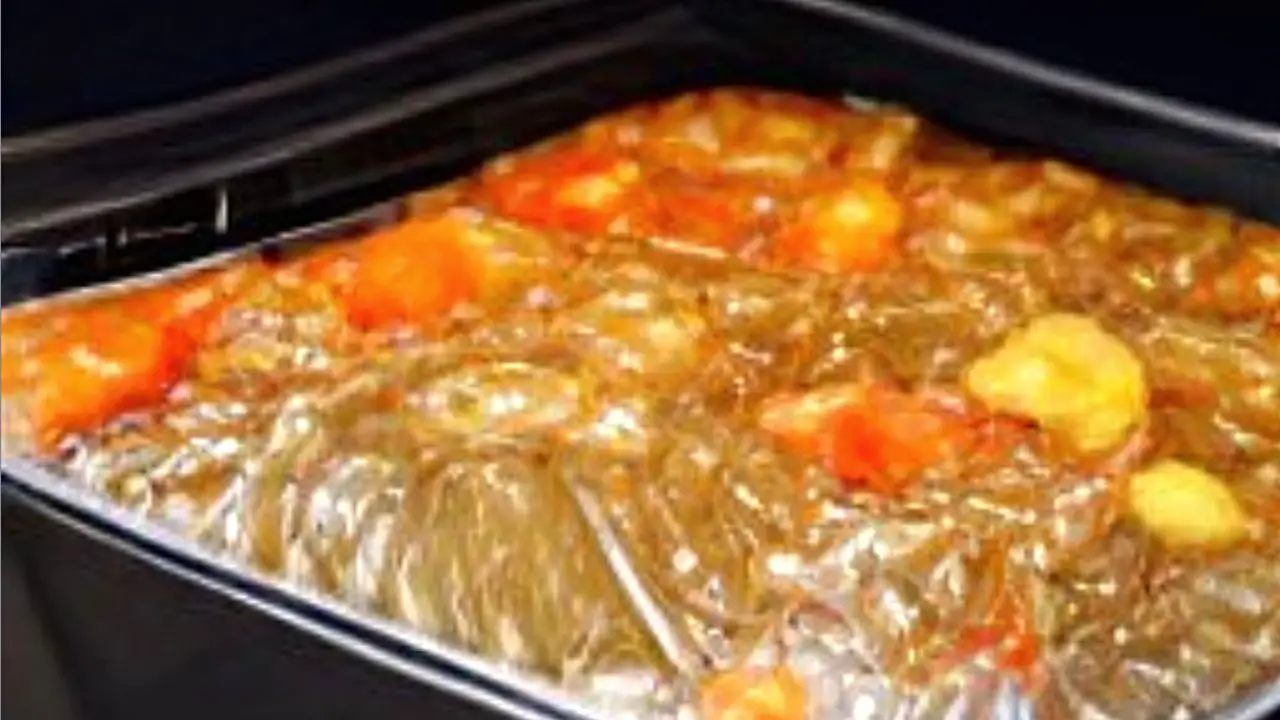Food plastic wrap, also known as cling film, or Saran wrap, is a thin, transparent plastic film great for sealing, wrapping, and securing food items, fruit bowls, food plates, trays, and storage boxes. It conveniently clings to itself and food containers, which is why it is one of the most used kitchen materials.
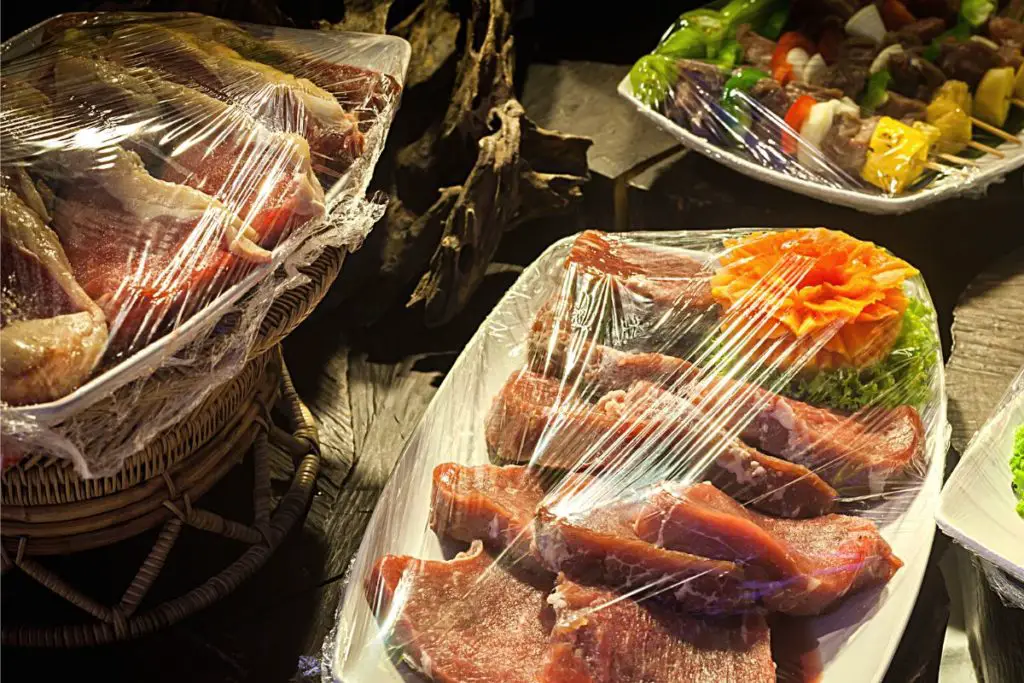
Because of its popularity and practicality, it really seems to have unlimited usage potential in your kitchen, but unfortunately, there are some instances when plastic wrap should NOT be used.
In this post, I will cover whether or not you can use plastic wrap in the oven, what happens if you do, and whether there are some better alternatives.
So, Can You Use Plastic Wrap In The Oven?
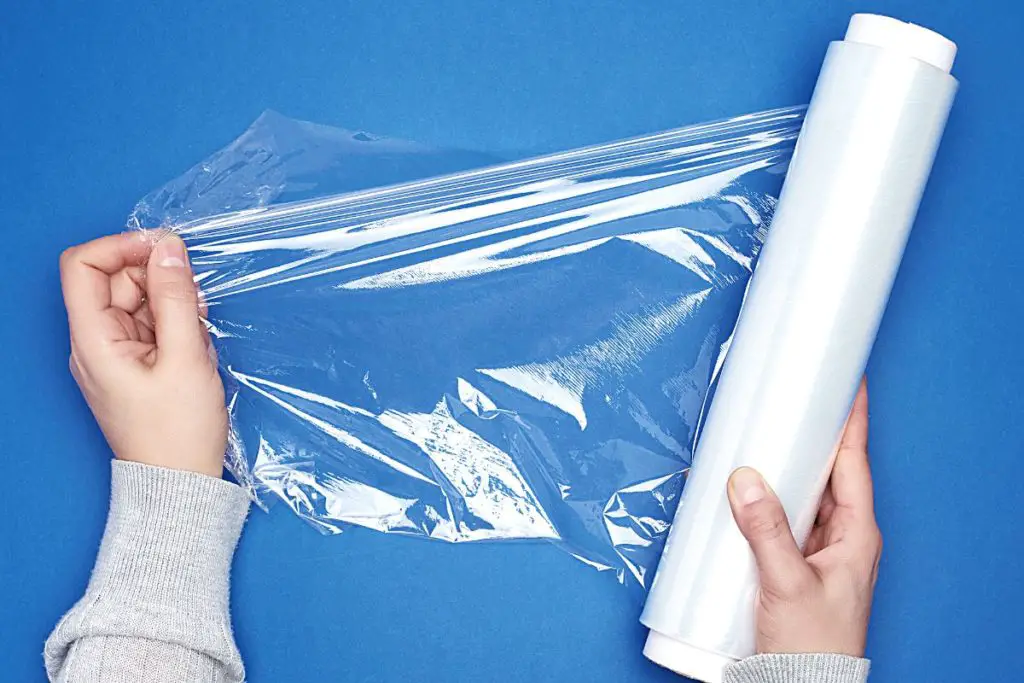
There is a difference between can and should—you can use plastic wrap in the oven, but that does not mean you should.
Many recipes and preparations call for the use of plastic wrap in the oven, with renowned celebrity chefs such as Robert Irvine including them as a quintessential element in many oven dishes [1]. That is because plastic wrap does not melt that quickly—in fact, some won’t melt if cooked at temperatures under 250°F (121°C) [2].
In this case, it is viable to place plastic wrap in the oven without it melting. But despite this, it’s still a dangerous activity you should not partake in.
First and foremost, most plastic wrap manufacturers warn against using their products in the oven, which is already a good enough reason not to do it. The reasoning behind this warning does come from a place of concern regarding the melting point of plastic, but it’s also because of chemistry.
Even if it doesn’t reach a melting point, plastic often contains phthalates and other substances that can leach into the food when exposed to high temperatures. Current manufacturing processes avoid the use of harmful chemicals, but there is always a higher risk of toxin exposure that is just best avoided [2].
What Happens If You Put Plastic Wrap In The Oven?
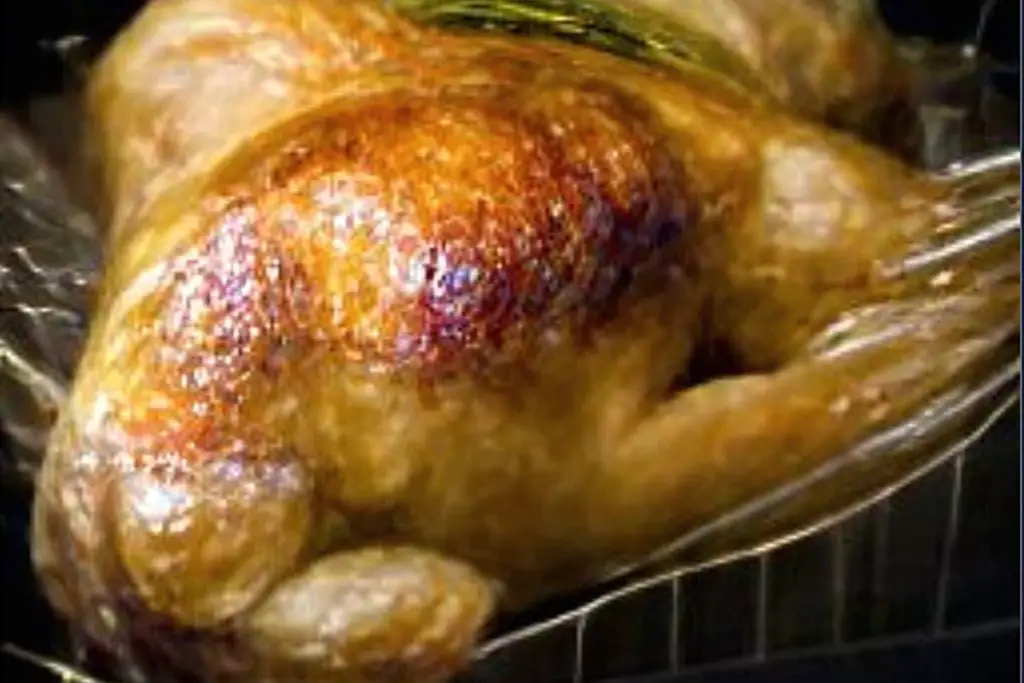
It all depends on how you use the plastic wrap and the temperature of your oven.
If you end up using plastic wrap in an oven with temperatures above 250°F (121°C), odds are it will melt, destroy your food, make a mess in your oven and release noxious fumes and chemicals in the air, potentially causing a health hazard and a risk of a fire.
However, if the temperatures of your oven are low, it is possible you won’t see any obvious change in your food. If the plastic is in close contact with your meal, there is a risk of some chemicals leaching into the food, which may cause danger to your health.
Is There A Safe Way To Cook With Plastic Wrap In The Oven?
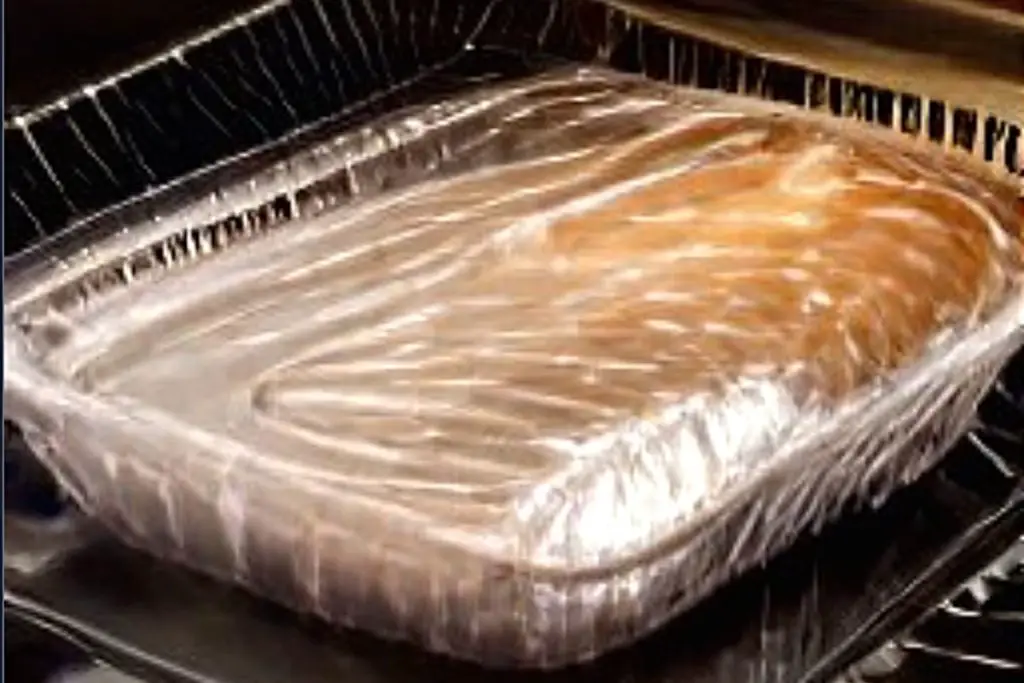
Chefs and other cooking experts regularly use plastic wrap in the oven, but only after carefully following specific steps. But keep in mind that while it reduces risks and exposure, they cannot guarantee without a doubt that these procedures are 100% safe.
Their trick? Cook only at low temperatures, and layer plastic wrap and aluminum foil [3].
Chefs always use commercial-grade wrap thick enough to withstand heat, as most regular household brands are too thin and risk of melting. They wrap the plastic around the food—usually meat—and then wrap plenty of aluminum foil over the plastic.
With this technique, the foil protects the plastic from the direct heat emitted by the oven, while the plastic keeps the moisture from the food locked in [3].
However, keep in mind that while chefs use this technique, no study proves its safety. While it is fair to assume that it will prevent the plastic wrap from melting, there is no way to know whether or not it shields your food from potential health hazards.
Remember—most manufacturers discourage you from using plastic wrap in the hot oven, so proceed at your own risk and with extreme caution if you follow this method.
Can You Use Plastic Wrap In The Microwave?
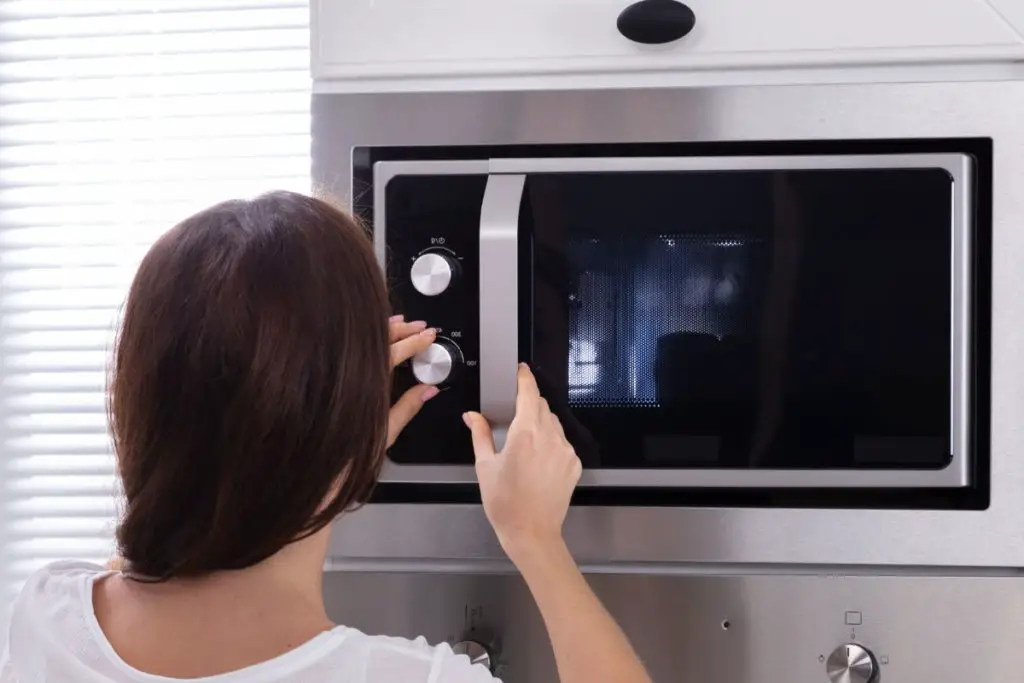
Most plastic wraps are microwave safe and therefore can be used in microwave, but always follow strict safety measures to prevent accidents or ruining your food.
First and foremost, make sure not to use any regular plastic wrap. According to the USDA, it’s essential to use heavy plastic wrap labeled as microwave-safe while ensuring it never touches the food directly [4].
This means that you cannot just wrap your food in plastic wrap and microwave it. Your best option would be to place the food in a microwave-safe deep container or bowl and then cover the top surface with plastic wrap, leaving enough room for the wrap never to touch your meal.
Likewise, the USDA recommends venting the plastic wrap to allow a steam escape [4].
Read Also: 9 Foods That Explode In The Microwave – Don’t Try This at Home!
Can You Use Microwave-Safe Plastic Wrap In The Oven?
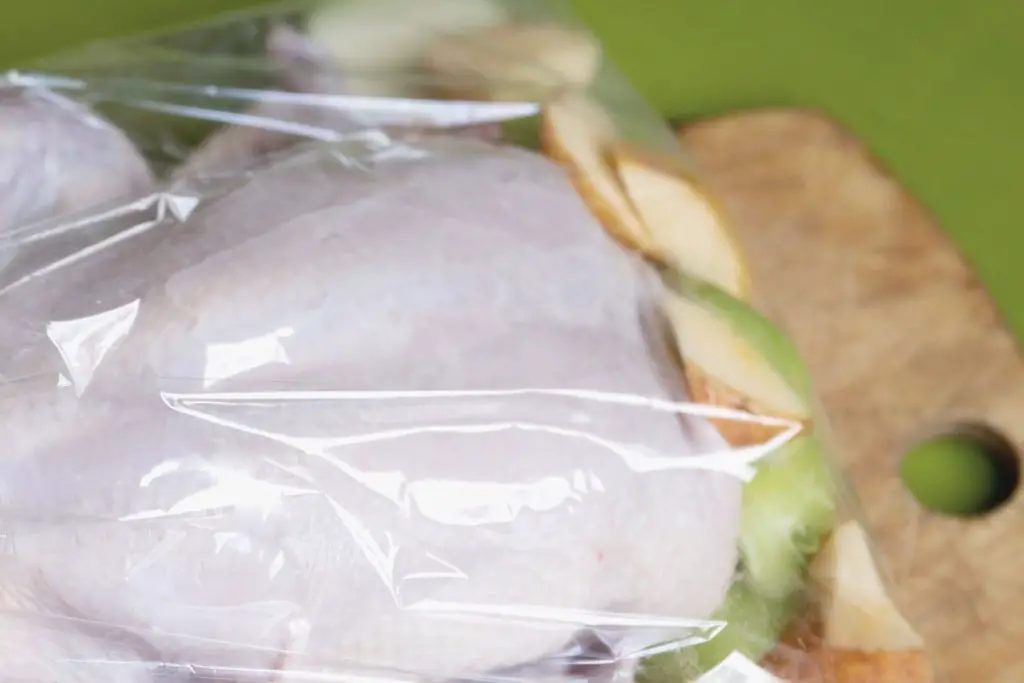
Microwaves and convection ovens work differently, and there is no significant overlap. Naturally, this means that something labeled microwave-safe doesn’t guarantee it will work on a regular oven.
Microwaves use the eponymous microwaves—electromagnetic waves—that affect the water molecules in the food. On the other hand, regular ovens have coils that generate heat that warms up the air and allows the food to absorb the heat until it cooks [5].
Since the heat in both comes from different sources, a microwave-safe plastic wrap won’t necessarily work just as well in the oven.
In fact, most microwave-safe plastic wrap manufacturers still warn against using their product in the oven since odds are, it will have the same melting point and concerns as regular plastic wrap.
3 Best Oven-Safe Alternatives For Plastic Wrap
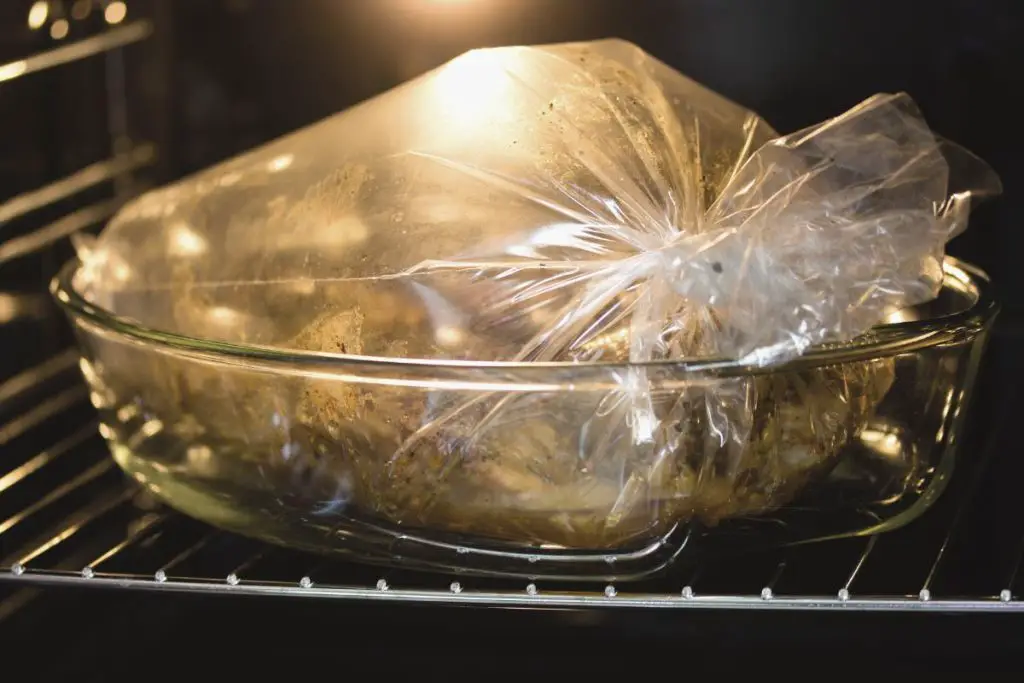
There are some oven-safe alternatives to plastic wrap besides aluminum foil that work great for cooking food in the hot oven.
1. Oven Bags
TAP ON IMAGE TO VIEW PRICE
As the name indicates, oven bags are designed with ovens in mind—naturally making them safe to use in the hot oven. They are flexible and versatile, making them the ideal replacement for plastic wrap.
Made of heat-resistant nylon or paper, oven bags often provide that airtight seal that prevents moisture loss and enhances the juiciness of your food. They’re inexpensive, BPA-free, heat-resistant, and grease-proof, which adds to their versatility.
They are durable and strong but keep in mind that they’re not reusable most of the time.
However, it is important to carefully place oven bags in the oven so that they do not come into direct contact with any hot surfaces or a heating element. This can be done by placing the oven bag on a baking sheet or foil-lined baking dish in the center of the oven.
Additionally, be sure to open the oven bag carefully so that steam does not escape and cause injury.
2. Silicone Bags
TAP ON IMAGE TO VIEW PRICE
There are many benefits to using parchment paper in the oven instead of plastic wrap. Parchment paper is non-stick, so it eliminates the need for grease or butter on your baking pan.
It also prevents food from sticking to the pan and makes cleanup much easier. Parchment paper can withstand high temperatures, so it’s perfect for lining baking sheets and protecting your food from direct contact with heat.
3. Oven-Safe, Non-Stick Liners
TAP ON IMAGE TO VIEW PRICE
Cling wrap is often used to line oven dishes to prevent food from sticking to the dish. However, a non-stick liner is a better option to use in the oven for several reasons.
- First, a non-stick liner is specifically designed to prevent sticking and can withstand high temperatures.
- Second, the non-stick liner is easy to clean and can be reused multiple times.
- Third, the non-stick liner does not melt or emit harmful chemicals when heated, unlike plastic wrap.
Read Also: Leaving An Oven On Overnight – Important Safety Precautions!
In Conclusion
Plastic wrap should not be used in the hot oven. However, there are other materials that can be safely used as an alternative. These include parchment paper, aluminum foil, and even oven-safe liners. With so many options available, there is no need to take the risk of using plastic wrap in the oven.
Sources:
- [1] Irvine, Robert (n/d). Ribs Recipe. Retrieved from https://www.foodnetwork.com/recipes/robert-irvine/ribs-2092005.
- [2] Shreeves, Robin (2017). Can Plastic Wrap Go In The Oven? Retrieved from https://www.treehugger.com/can-plastic-wrap-go-oven-4868748.
- [3] Palermo, Andrew (2021). Can Plastic Wrap Go In The Oven (Quick Guide). Retrieved from https://prudentreviews.com/plastic-wrap-oven/
- [4] U.S. Department Of Agriculture. Cooking Safely In The Microwave Oven. Retrieved from https://www.fsis.usda.gov/node/3355.
- [5] Appliance Analyst (n/d). Microwaves vs. Ovens: Their Differences Compared. Retrieved from https://applianceanalysts.com/microwave-vs-oven.
